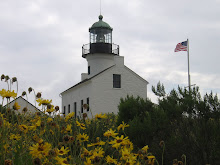One of nature’s most outstanding light shows occurs this month - The Perseid Meteor Shower. It’s expected to produce about 60 to 80 “shooting stars” per hour during its peak on Monday, August 12 through Tuesday, August 13, although you can start watching days before. Ideal viewing is between 11pm and 4:00am, with the best visibility in the northern hemisphere. To enjoy the display, you’ll want to find a dark, open location away from the glare of city lights. No telescope or binoculars are needed – just face the northeast and scan the sky. The meteors may come in spurts and whisk across the sky in many different directions, so grab a blanket or recliner, lay back and enjoy the show.
The Perseid Meteor Shower occurs when Earth travels through a stream of debris from the comet Swift-Tuttle. The debris particles, some as small as a grain of sand, hit the Earth’s upper atmosphere at speeds of 130,000 miles per hour, creating streaks of light as they burn up. These visible light paths or “falling stars” are what make up the Perseid Meteor Shower. It is so named because it appears to radiate from the constellation Perseus.

























0 comments:
Post a Comment